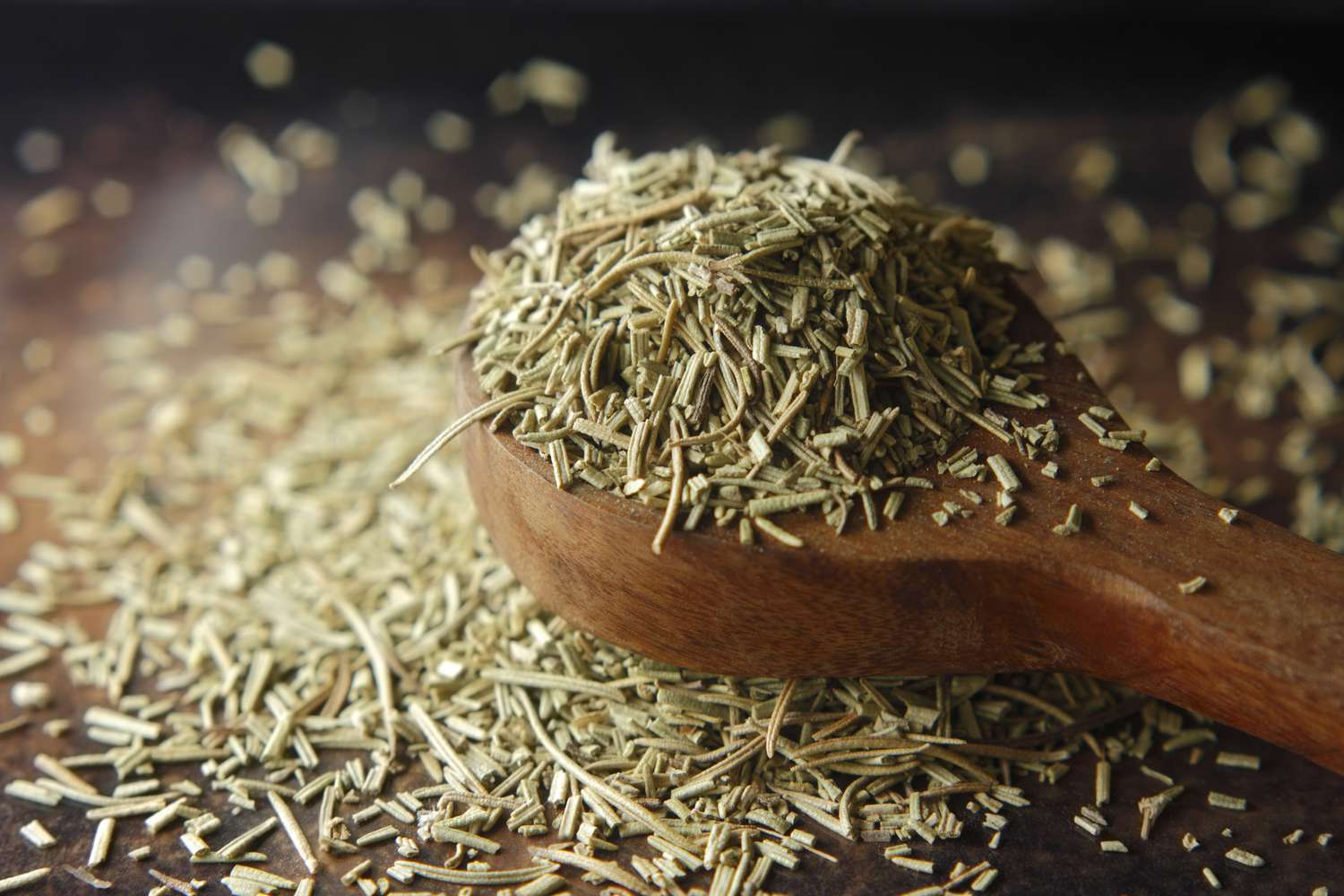Home>Gardening Techniques>DIY Projects>When To Add Rosemary To Stew


DIY Projects
When To Add Rosemary To Stew
Published: February 2, 2024
Learn when to add rosemary to your stew for the best flavor and aroma. Explore DIY projects for enhancing your cooking skills with fresh herbs.
(Many of the links in this article redirect to a specific reviewed product. Your purchase of these products through affiliate links helps to generate commission for Chicagolandgardening.com, at no extra cost. Learn more)
Table of Contents
Introduction
Introduction
When it comes to cooking, adding the right herbs and spices can take a dish from ordinary to extraordinary. One such herb that has been a staple in kitchens for centuries is rosemary. Its distinct aroma and flavor can elevate the taste of various dishes, including stews. However, knowing when to add rosemary to a stew can make all the difference in achieving the perfect balance of flavors. In this article, we will explore the best practices for incorporating rosemary into your stew, ensuring that you make the most of this versatile herb.
Rosemary, with its needle-like leaves and woody fragrance, is a member of the mint family and is native to the Mediterranean region. Its robust flavor profile, which is often described as piney and slightly peppery, makes it a popular choice for enhancing the taste of savory dishes. Additionally, rosemary is known for its aromatic qualities, adding a delightful fragrance to the kitchen as it infuses into the stew.
As we delve into the intricacies of using rosemary in stew, it's essential to understand the herb's characteristics and the benefits it offers. From its potential health benefits to its ability to complement a wide range of ingredients, rosemary brings a unique dimension to stew that is worth exploring. Whether you're a seasoned home cook or just starting your culinary journey, mastering the art of using rosemary in stew can open up a world of culinary possibilities. So, let's embark on this flavorful exploration and uncover the secrets of incorporating rosemary into your next stew creation.
Understanding Rosemary
Rosemary, a fragrant and versatile herb, is a beloved staple in the culinary world. Its scientific name, Rosmarinus officinalis, translates to “dew of the sea,” reflecting its natural habitat along the Mediterranean coast. This evergreen herb features needle-like leaves and a woody stem, exuding a distinct aroma that evokes images of sun-drenched landscapes and fresh, herbaceous flavors.
One of the key attributes of rosemary is its robust and complex flavor profile. Its taste is often described as piney and slightly peppery, with hints of citrus and a subtle bitterness. This unique combination of flavors makes rosemary a valuable addition to a wide array of dishes, including stews. When added to a stew, rosemary infuses the dish with a delightful earthiness and a hint of floral sweetness, elevating the overall taste experience.
Beyond its culinary applications, rosemary has a rich history of medicinal and symbolic significance. For centuries, it has been revered for its potential health benefits, including its antioxidant and anti-inflammatory properties. In traditional medicine, rosemary was used to alleviate indigestion, improve memory, and boost circulation. Its aromatic oils were also employed for their antiseptic and fragrant qualities.
Furthermore, rosemary holds symbolic meanings across various cultures. It has been associated with remembrance, fidelity, and love, often incorporated into ceremonies and rituals. The ancient Greeks and Romans esteemed rosemary for its sacred properties, using it in religious ceremonies and as a symbol of loyalty and protection.
As we unravel the essence of rosemary, it becomes evident that this herb transcends its role as a mere flavoring agent. Its rich history, diverse uses, and captivating aroma make it a cherished component of culinary traditions worldwide. Understanding the multifaceted nature of rosemary allows us to appreciate its significance in the culinary realm and empowers us to harness its potential to enhance the flavors of our favorite stews.
Benefits of Adding Rosemary to Stew
Introducing rosemary to a stew not only imparts a delightful flavor and aroma but also offers a myriad of potential health benefits. The inclusion of this aromatic herb can elevate the nutritional profile of the dish while enhancing its overall sensory appeal.
One of the primary advantages of incorporating rosemary into stew is its rich antioxidant content. Rosemary contains various potent antioxidants, such as rosmarinic acid and carnosic acid, which have been linked to potential health-promoting properties. These antioxidants may help combat oxidative stress in the body, contributing to overall well-being.
Furthermore, rosemary is known for its anti-inflammatory properties, which can be beneficial when added to a stew. Inflammation is a natural immune response, but chronic inflammation has been associated with various health issues. The anti-inflammatory compounds present in rosemary may help mitigate this response, promoting a balanced inflammatory state within the body.
From a culinary perspective, the addition of rosemary to stew introduces a layer of complexity to the flavor profile. Its piney, slightly peppery notes complement a wide range of ingredients, enhancing the overall taste experience. Whether incorporated into meat-based stews or vegetarian renditions, rosemary contributes a distinct earthiness that harmonizes with other flavors, creating a well-rounded and satisfying dish.
Moreover, the aromatic qualities of rosemary can transform the sensory experience of enjoying a stew. As the stew simmers, the fragrant oils of the herb infuse into the dish, enveloping the kitchen in a warm and inviting aroma. This olfactory enhancement adds to the overall enjoyment of the culinary creation, engaging multiple senses and elevating the dining experience.
By harnessing the benefits of adding rosemary to stew, individuals can not only savor the enhanced flavors but also potentially reap the rewards of its nutritional properties. From its antioxidant content to its aromatic allure, rosemary proves to be a valuable addition to any stew, offering a harmonious blend of taste and wellness benefits.
Best Time to Add Rosemary to Stew
Timing is crucial when incorporating rosemary into a stew, as it allows the herb to impart its full flavor while harmonizing with the other ingredients. While there is flexibility in the method of adding rosemary, certain approaches can optimize its contribution to the stew’s overall taste profile.
One of the prime considerations when adding rosemary to a stew is the duration of the cooking process. As a robust herb with potent aromatic and flavor compounds, rosemary benefits from a longer infusion period. Therefore, it is advisable to introduce rosemary early in the stewing process, allowing its essence to meld with the other components as they simmer together.
Adding rosemary during the initial stages of stew preparation enables its flavors to permeate the dish thoroughly, resulting in a more cohesive and integrated taste. Whether the stew features meat, poultry, or vegetables, the early addition of rosemary ensures that its piney and slightly peppery notes infuse into the liquid base, creating a rich and aromatic foundation for the dish.
Another opportune time to incorporate rosemary is during the sautéing phase, especially when the stew recipe calls for the browning of ingredients such as onions, garlic, or meat. By adding rosemary at this stage, the herb’s essential oils are released and meld with the savory aromas emanating from the pan, enhancing the overall depth of flavor in the stew.
Additionally, for individuals using fresh rosemary sprigs, the herb can be tied into a bundle or bundled in cheesecloth to facilitate easy removal once the stewing process is complete. This method allows the flavors of rosemary to infuse into the stew while offering the convenience of effortless removal before serving, ensuring that the herb’s presence is subtle yet impactful.
By strategically timing the addition of rosemary to stew, individuals can maximize the herb’s potential to elevate the dish’s taste and aroma. Whether infused during the initial stages of cooking or during the sautéing process, rosemary contributes a layer of complexity and fragrance that enhances the overall stewing experience.
Tips for Adding Rosemary to Stew
When incorporating rosemary into a stew, several tips can optimize the herb’s impact on the dish, ensuring a harmonious blend of flavors and aromas. These guidelines aim to leverage rosemary’s unique qualities while enhancing the overall stewing experience.
-
Balance the Quantity: While rosemary contributes distinct flavors, it is essential to balance the quantity used in the stew. Too much rosemary can overpower the dish, so it’s advisable to start with a conservative amount and adjust to taste as the stew simmers.
-
Choose the Right Form: Whether opting for fresh rosemary sprigs or dried rosemary, selecting the appropriate form is crucial. Fresh rosemary offers a vibrant and robust flavor, while dried rosemary concentrates its taste. Understanding the nuances of each form can guide the selection process based on the desired flavor profile.
-
Infuse Early: To fully integrate rosemary’s flavors into the stew, add the herb early in the cooking process. This allows the aromatic compounds to infuse into the dish, creating a cohesive and well-rounded taste profile.
-
Consider the Cooking Time: When preparing a stew with extended cooking times, such as slow-cooked or braised dishes, rosemary can withstand prolonged simmering, enhancing the depth of its infusion. For quicker stews, adjusting the quantity of rosemary may be necessary to prevent overpowering the dish.
-
Pairing with Complementary Ingredients: Rosemary complements a variety of ingredients, including meats, root vegetables, and legumes. Understanding the herb’s affinity with different components can guide its inclusion in diverse stew recipes, enhancing the overall taste synergy.
-
Utilize Bundled Rosemary: When using fresh rosemary sprigs, bundling them together or securing them in cheesecloth simplifies their removal after the stewing process, ensuring that the herb’s essence infuses into the dish without leaving residual leaves.
-
Adjust to Taste: Throughout the stewing process, periodically taste the dish to gauge the intensity of rosemary’s presence. This allows for adjustments to be made, ensuring that the herb’s contribution aligns with the desired flavor profile of the stew.
By adhering to these tips, individuals can harness the full potential of rosemary in stew, optimizing its flavors and aromas to create a delectable and well-balanced culinary creation.
Conclusion
As we conclude our exploration of incorporating rosemary into stew, it becomes evident that this aromatic herb holds the power to transform a simple dish into a culinary masterpiece. From its rich history and diverse uses to its potential health benefits and sensory allure, rosemary embodies a multifaceted essence that enriches the stewing experience.
By understanding the best practices for adding rosemary to stew, individuals can unlock the herb’s full potential, harnessing its robust flavors and aromatic qualities to elevate their culinary creations. Whether infusing the stew with the earthy notes of fresh rosemary or incorporating the concentrated essence of dried rosemary, the herb offers a spectrum of possibilities for enhancing the taste and aroma of stews.
Furthermore, the strategic timing of adding rosemary, coupled with thoughtful considerations such as balancing the quantity and pairing it with complementary ingredients, empowers cooks to craft stews that resonate with depth and complexity. The tips provided serve as a guide for leveraging rosemary’s unique attributes, ensuring that its presence in the stew is both impactful and harmonious.
As individuals embark on their culinary endeavors, the inclusion of rosemary in stew presents an opportunity to engage the senses, savor nuanced flavors, and potentially reap the benefits of its nutritional properties. Whether seeking to create a comforting classic or an innovative gastronomic delight, rosemary stands ready to impart its signature essence, enriching the stewing journey with its timeless appeal.
In essence, the art of adding rosemary to stew transcends mere culinary technique; it embodies a celebration of tradition, flavor, and well-being. As the savory aromas of rosemary-infused stew waft through the kitchen, they carry with them a testament to the enduring allure of this cherished herb, inviting all to partake in the joys of culinary creativity and sensory delight.





